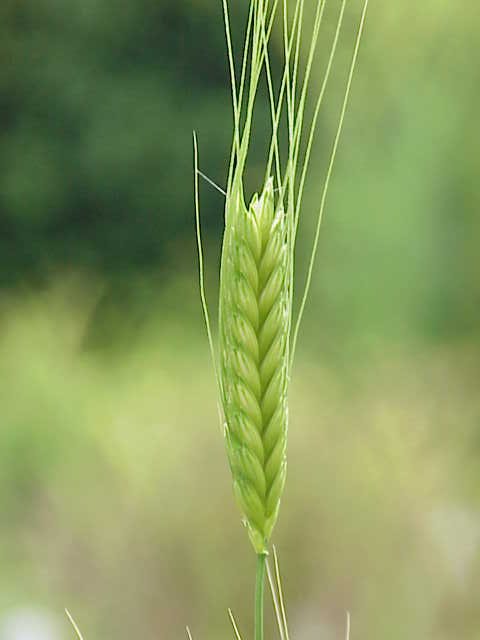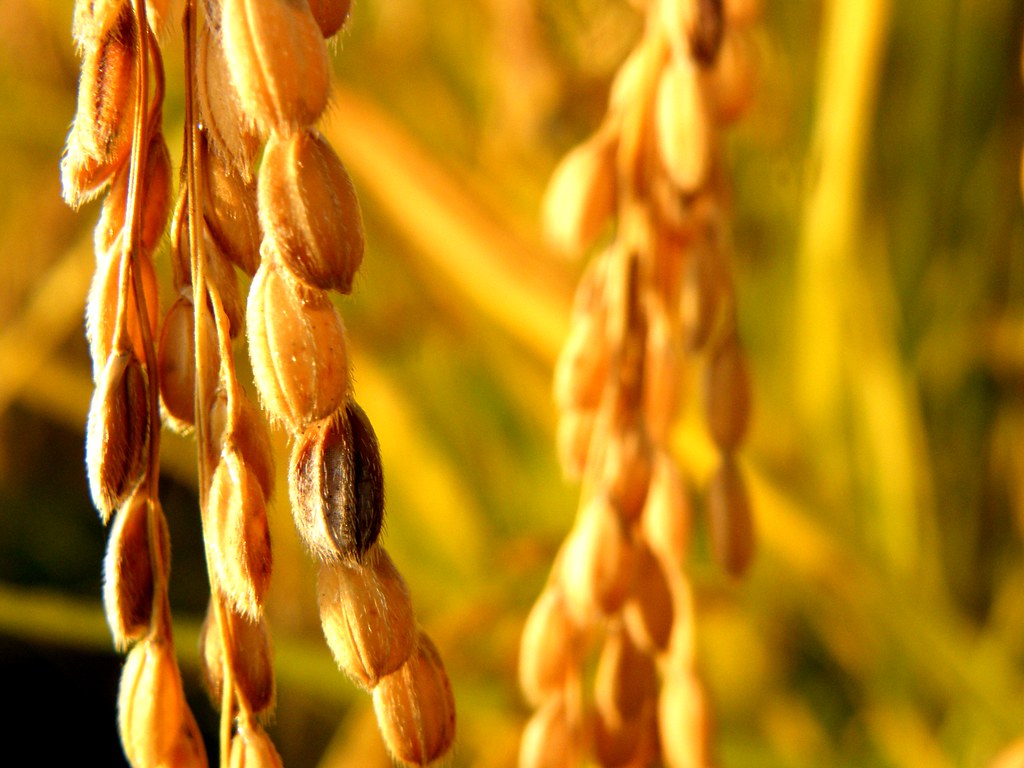The Genetics of Life
As a species, we've domesticated and selectively bred animals and plants for our own benefit, and so have allowed those organisms to survive; we've changed the earth, for better or for worse, and have had a hand in breeding crops that have ensured our survival. One of the best examples of this is the wheat we find in our bread and pasta, so how did they come about?
Before I continue, I must first define a few things, because of the importance of genetics in the long history wheat in our past and present:
- Every living thing on earth has a genetic code that defines characteristics at the species level and of the individual. For example, in humans: eye colour and sex are determined by specific genetic sequences.
- These genetic sequences are found on chromosomes, which are more easily seen during cell division. Chromosomes are tightly wound bits of DNA that you inherit from your parents, and the amount you have is called ploidy. For example, (most) humans have 23 chromosomes that are paired, one set of 23 from mother and father, totalling 46 chromosomes. Therefore we are "diploid", displayed like this: 2n=2x=46.

- Polyploidy refers to cells and organisms that contain more than two paired chromosomes, inherited from the parents. Sometimes one species may breed with another the offspring is called an allopolyploid.
- Mutations are random changes in the DNA sequence, due to many factors. I won't go to specific but these can result in characters that are lethal, beneficial or have no effect on the individual's ability to survive.
The History of Bread and Pasta Wheat
We must now cast our eyes to the Near East, ~9500 years ago where a mutation occurred in a wild Einkorn wheat (Triticum monococcum ssp. aegilopoides) giving rise to what is now referred to as Einkorn wheat (Triticum monococcum ssp. monococcum, 2n=2x=14). Domesticated Einkorn wheat possesses a mutation that suppresses shattering, making it easier to harvest the wheat. The cultivation of Einkorn wheat dates back to ~9400 years ago and is now used as animal feed, primarily in Italy, Spain and Turkey the mountainous areas as an animal feed.

A precursor to the bread and pasta wheats, Triticum turgidum spp. diococcoides (2n=4x=28, AABB) arose as an allopolyploid when a while species of wheat (Triticum uratu, 2n=2x=14) and a closely related wild grass (Aegilopes speltoides; 2n=2x=14) bred to form the ancestor to the wheats we know and love.
Around 9000 years ago in the Fertile Crescent, a new wheat arose, called Emmer wheat (Triticum turgidum ssp. dicoccum; 2n=4x=28), which is a hulled wheat (the grains have no covering and exposes the whole seed) with much larger seeds than T. turgidum spp. dicoccoides. Emmer wheat was merely a stepping stone: about 7000 years ago, a mutation arose that allowed the grain to be free-threshing and a new species came about, called Durum wheat (T. turgidum ssp. durum) which is the wheat used for pasta.

Bread wheat (Triticum aestivum, 2n=6x=42; AABBDD) arose ~6000 years ago in the Fertile Crescent, and as fate would have it, came about when domesticated Emmer wheat and a wild relative, Triticum tauschii (2n=4x=14) bred to form one of the most important grains in human history.
Modern Farming and GMOs
Throughout this time period and to now, wheat growers have gone through major phases of selecting individuals for breeding (which can be considered a way of making GMOs) :
- Subconscious and deliberate selection by wheat growers throughout history. These types of selection resulted in many characteristics being selected, such as choosing individuals with hardier spikes, those with fast and synchronous germination and plants which grow in a more erect habit. Both types of efforts enabled farmers to have an increased crop yield, better flour quality and larger grain size.
- Scientifically planned breeding by scientists that specialise in genetics and agriculture, who then select individuals based on their lineage and most desirable characters, based on genetic evidence. And may lead to the use of breeding genetically engineered organisms with an array of better characteristics.
The most controversial, method of the modern farmer is genetic engineering - a process that may take from 6-15+ years of hard work and trial and error. These projects must go under rigorous testing, certification and regulatory approval by government agencies, for safety of consumption etc. The end result of this is plants that are more hardy, more resistant to herbicides and contain natural insect repellents, thus allowing farmers to produce more, and have bigger grains than their ancestors. Perhaps the most successful use of modern techniques was the Green Revolution in the 1960s, which allowed many countries to become self-sufficient when growing the hardy semi-dwarf wheats (albeit at a social cost).
 A livelier use of genetic engineering is perhaps the Gold Rice Project, which has allowed communities where Vitamin A deficiency is a very real threat to almost disappear, saving many lives and ensuring those communities do not suffer from it again. And of course, we have the "Super Bananas," which has the same goal of Golden rice, to help those communities with Vitamin A deficiency. Genetically engineered crops have the potential to do more good than they are currently doing so, if the uninformed stigma surrounding them were to disappear.
A livelier use of genetic engineering is perhaps the Gold Rice Project, which has allowed communities where Vitamin A deficiency is a very real threat to almost disappear, saving many lives and ensuring those communities do not suffer from it again. And of course, we have the "Super Bananas," which has the same goal of Golden rice, to help those communities with Vitamin A deficiency. Genetically engineered crops have the potential to do more good than they are currently doing so, if the uninformed stigma surrounding them were to disappear. . . .
The journey of one of the most important crop plants in human history is a beautiful one, and has arguably had the most influence in our agricultural habits, which evolved along with our way of making new foods from the crops in our back yards. It's important to remember that, the next time you enjoy pasta at your favourite restaurant, munch on a sandwich for lunch or have doubts on whether or not the bread your eating is "natural" enough.

No comments:
Post a Comment